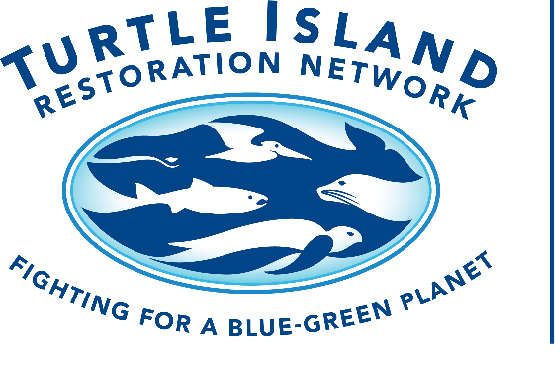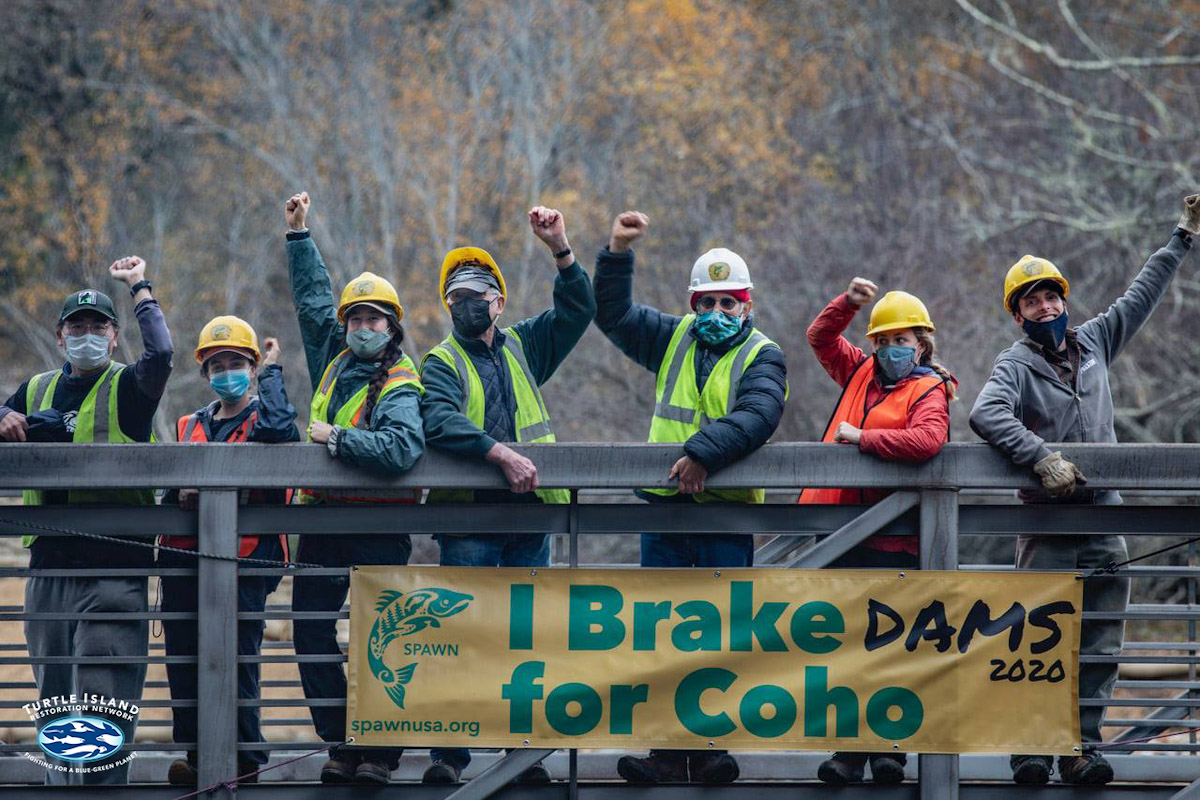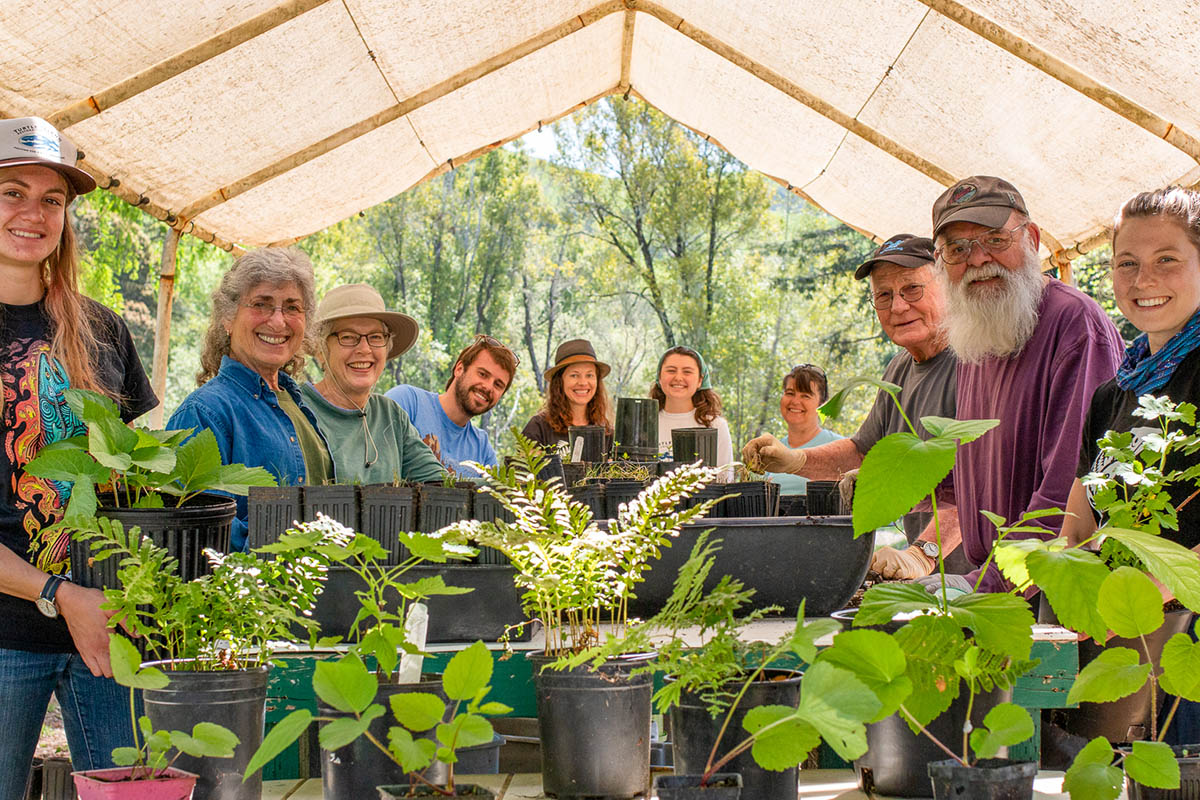
Turtle Island Restoration Network
2019 – $10,000 10,000 Redwoods Project
Turtle Island Restoration Network (TIRN) has been a leading advocate for the world’s ocean and marine wildlife for more than 30 years. Over decades, TIRN has worked tirelessly to create long-lasting positive change based on science to help protect numerous marine species including sea turtles, whale sharks, and coho salmon.
With humble beginnings as an all-volunteer grassroots effort, TIRN has continued to grow and help affect change throughout the world. Today, TIRN responds rapidly to environmental threats to the ocean, inland watersheds, and marine wildlife.
Programs span across the globe, including the coastal waters of the Galapagos Islands, the sandy beaches of Galveston, Texas and the redwood forests of California, to protect sharks, coho salmon, marine mammals, and seabirds from a myriad of threats including industrial overfishing, destruction of coastal and riverine habitat, and the threat of climate change from fossil fuel projects. With TIRN’s Salmon Protection And Watershed Network (SPAWN) initiative, the organization engages in on-the-ground protection and restoration of endangered coho salmon and threatened steelhead in the Bay Area and the environment on which we all depend. SPAWN uses a multi-faceted approach to accomplish its mission, including habitat restoration, conservation research and monitoring, science-based advocacy, grassroots empowerment, public and environmental education, media campaigns and collaboration with other organizations and agencies who share our vision.
Through its work, hundreds of thousands of sea turtles and other marine species have been saved through grassroots empowerment, consumer action, strategic litigation, hands-on restoration, environmental education, and by promoting sustainable local, national and international marine policies.
The critical work TIRN has influenced is witnessed across the globe and has contributed substantial and measurable change for the environment, wildlife and people.
To save 50,000 sea turtles annually, TIRN helped shut down a Mexican sea turtle slaughterhouse and convinced Mexico to stop all legal turtle slaughter and join the Endangered Species of Wild Fauna and Flora Convention on Foreign Trade (CITES).
TIRN’s role in reforming regulations and policies helped close 250,000 square miles of the Pacific Ocean to protect sea turtles and marine mammals from harmful fishery practices.
The organization’s work restored over 100,000 square feet of crucial creekside habitat for wild coho salmon, an issue close to the organization’s headquarters in the San Francisco Bay Area.
These are just a few examples of the significant changes TIRN has affected in its commitment to acting as wise, willing, and able stewards of life in the earth’s oceans and on its lands.
A network of thousands of supporters, volunteers, and pro bono professionals help TIRN accomplish its mission of protecting marine wildlife and the ocean and inland watersheds that sustain them.
With an extensive history of caring for the state and health of the planet, TIRN has had an influential effect for over three decades. Today, it remains true to its original vision and is able to respond rapidly to environmental threats to our ocean, streams and marine wildlife.
TIRN will not be slowing down and will continue to work for the planet and look forward to a bright future for our blue-green planet.
10,000 Redwoods
The 10,000 Redwoods Project is a science-based, multi-faceted program to plant thousands of redwood trees and other native forest and riparian vegetation to address (1) climate change by sequestering carbon; (2) critically endangered salmon recovery through habitat restoration; and (3) improved water quality through creek bank stabilization and filtering run-off. The 10,000 Redwoods Project provides a textbook demonstration of how we simultaneously improve the ecosystem services that are vital to both wildlife and humans by protecting and enhancing critical habitat.
The 10,000 Redwoods Project addresses the global issue of climate change by creating a carbon sink to fight climate change through local, hands-on action and education by:
- Protecting and expanding creekside redwood forests in the Lagunitas Creek Watershed and elsewhere that shelter endangered species including wild endangered coho salmon, Northern spotted owls and California freshwater shrimp.
- Sequestering carbon, a cause of climate change, through planting native redwood trees, riparian plants, and other redwood forest trees and understory plants in crucial watersheds.
- Planting trees, which provide creekside food and shelter to salmon and other wildlife. Eventually, branches and trunks fall in the creek to create “large woody debris,” an essential component of healthy streams and salmon habitat.
- Improving water quality by creating self-sustaining riparian and floodplain plant communities that keep water cool and clean through natural filtration.
- Engaging volunteers in the satisfying work of collecting native seeds, raising trees and other plants, and “out-planting” them at restoration sites.
- Reaching beyond the Lagunitas Creek Watershed to engage students and volunteers of all ages to raise and plant native redwood trees throughout the San Francisco Bay Area. TIRN provide seeds, supplies and support to classrooms and individuals to raise trees for planting in both the Lagunitas Creek Watershed and other areas where redwoods have historically grown.
- Building a climate change movement that motivates the public with a simple way to reduce their carbon footprint.
- Providing the public with a mechanism to help accelerate carbon sequestration from the atmosphere to mitigate for the release of greenhouse gasses.







